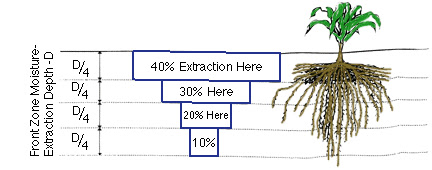Q.
I want to start up my raised vegetable bed again after two or three years. Can
you help?
A. Raised beds can be simple or complicated. It's what you want or like.
 |
| Raised beds can be made out of cement block or wood. |
1. Mix compost into the soil first. You can use “steer manure” but it should be
done in the fall so it has time to “rot”. Remove your irrigation and mix a
layer of compost into the soil as deep as possible. If the soil is ten inches
deep in your raised bed, then mix the compost that deep. The soil should be
similar from top to bottom to improve drainage.
 |
| Raised beds can have side walls or not. Make side walls out of 45 degree sloping soil. Add compost once a year. |
How much to mix into the soil depends on
how much is there. You might mix a 1/4-inch layer each year in a well amended
soil. Or you might mix to as much as one fourth of its content, and then one
annual quarter inch layer after that, if it is raw desert soil. You can judge
how much is present by digging with a hand trowel or check it visually using
its color. For vegetables the soil should be easy to dig with a trowel when it
is moist and dark.
.JPG) |
| Adding compost to raised beds without side walls. |
Add water to settle the soil.
 |
| Raised bed made from lumber. |
Next is how much fertilizer to add. That
depends on how “rich” the compost was. Some animal-manured composts are rich,
while others are not. Most soils are darker after composting and ready to plant
“as is”. Some need a “starter fertilizer” added. Again, ask your salespeople.
.JPG) |
| Fertilizer is added just when plants start growing. |
Finally, is the “when and how much” to
water. Get the soil wet from top to bottom. Add at least a quart to the soil or about 30 minutes of water. Irrigation is trial by error. but once you have it established, watering
seldom changes. If you are using Las Vegas tap water, then water until the
entire soil mix is wet from top to bottom. Watering like that flushes salts in
the water out of the soil. This takes around 30 minutes, but it might be more
or less depending on your soil and irrigation system. How often to water
depends on the time of year.
.jpg) |
| Water is filtered and pressure reduced. Hopefully there is a way to shut off the water when needed. |
In the summer, water once before it gets hot. That
is usually once a day. Watering only once when it gets hot allows for the roots
to get water from top to bottom.
 |
| If you are using well water, hopefully there is a way to flush the irrigation lines of debris and bacterial growth. This is done in the opposite end from the incoming water. |
There is a trend to water as often as nine
times a day! Water only once! If you are using drip irrigation it will be added slowly. Be careful. Frequent irrigations (more than once or at the most twice per day) encourages lots of surface roots
and loss of heat tolerance because shallow roots is where the water and
dissolved fertilizers are located. Plants with lots of surface roots are not very
tolerant of the heat. Instead use a light application of mulch and irrigate
once, during the heat and in the morning. You want your vegetables with water when they enter the heat of the day.
.JPG) |
| Irrigation can be on a raised bed without sidewalls. The vegetables need water at least once a day to grow in the summer. Preferably at the beginning of a hot day! |
.JPG)



.JPG)
.png)





.JPG)

.JPG)
.jpg)

.JPG)



.jpg)

.JPG)
.JPG)
.jpg)
.JPG)
.JPG)





.JPG)
.JPG)



